If you’ve been making sourdough for a while, you practice and practice until you discover what works for you. It’s the same for me. I enjoy making sourdough every few weeks, so I thought I would share a few tips that make baking a loaf a little easier. It’s what works for me.
Using mixing bowls as an alternative to Bannetons
Lining the bowls and Bannetons with muslin to keep them clean while the dough is rising.
Use pie tins to avoid baking a frisbee.
I was first introduced to Sourdough making during a course at Bettys cookery school many years ago. Then, some years later, I went to Sarah Lemanski’s (
) Nova Bakehouse Dock Street in Leeds to learn a little more.During the lockdown years, I started following Ellaine Boddy, sadly not yet on substack, but is a member of
and bought her first book, ‘Whole Grain Sourdough at Home’. Her Master Sourdough recipe on page 36 is the one I make the most. I double the quantities to make two loaves. One of which can be frozen.My starter is several years old, and in that time, I have gotten to know how it behaves. Even when there is only a residual amount of starter left in the jar, it still manages to come back to life once it’s been fed again.
There are times when I leave my starter in the fridge for weeks, even months before I use it again. By then, it had often developed a dark hooch on the top, which I poured away before feeding it with a 1 - 1 ratio of strong white flour and tepid tap water—in this case, 30 grams of flour and 30 grams/ml of water.
I give it a good mix, leave it on my countertop, and wait for it to reactivate. Depending on how long it’s been languishing in the fridge determines how often I feed it to get it going again. More often than not, I only need to feed it twice in 48 hours before it’s ready to use. The heat of your kitchen will also determine how quickly a starter reactivates.
But this week, I only needed to feed my jar of starter once. Some people give their starter a name, but I haven’t.
It was about half full when I fed it, so I left it to one side. After a couple of hours, someone shouted me into the kitchen to say the lid had popped and it was beginning to ooze over the side like lava. Thankfully, I always use a soft top to allow this to happen, never a screw top.
It was ready to be used.
Bannetons can be expensive, which is why I only have one of them. However, a small mixing bowl can be used. I cover both a Banneton and a small mixing bowl with a double layer of muslin cloth. See the above video.
This is especially protective of the Banneton ridges, as it helps prevent flour from remaining in the crevices. If there are any flour remnants, I brush them out with a firm pastry brush.

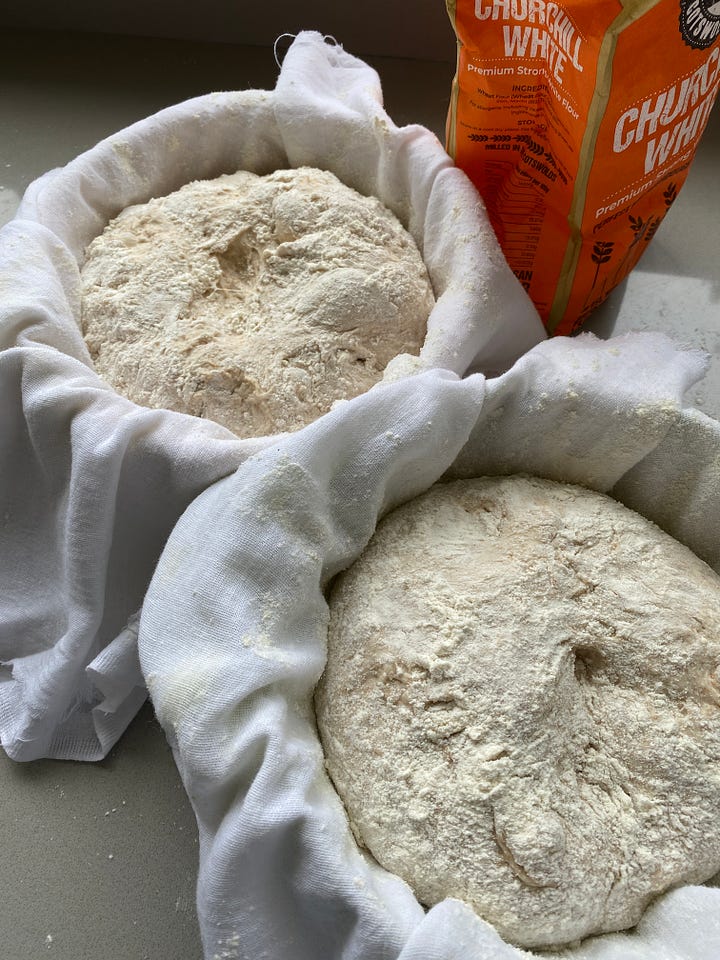
Once the banneton and mixing bowl are lined with muslin, I dust them with plenty of flour. Trust me when I say that you don’t want your dough sticking to the muslin.
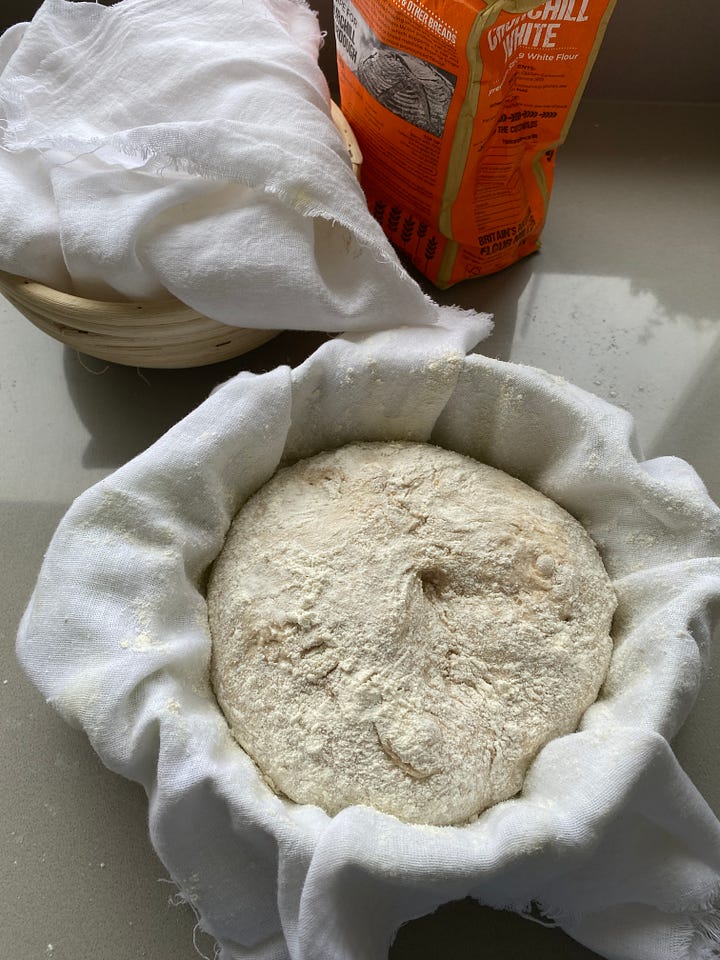
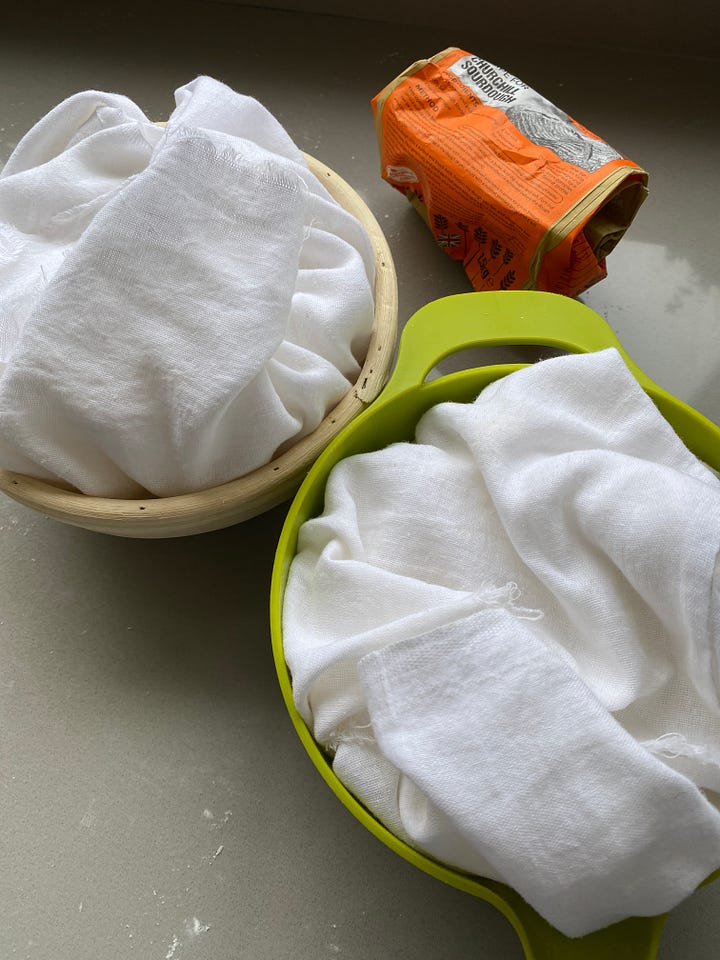
Prepare your sourdough according to your recipe and place it in the bowls. Before covering them with the muslin, add more flour on the top and sides of the dough. You will need to carefully pull the dough away from the sides of the muslin to do this.
Depending on how warm my kitchen is, I will either place the bowls in the fridge to proof them for a few more hours or leave them on the countertop.
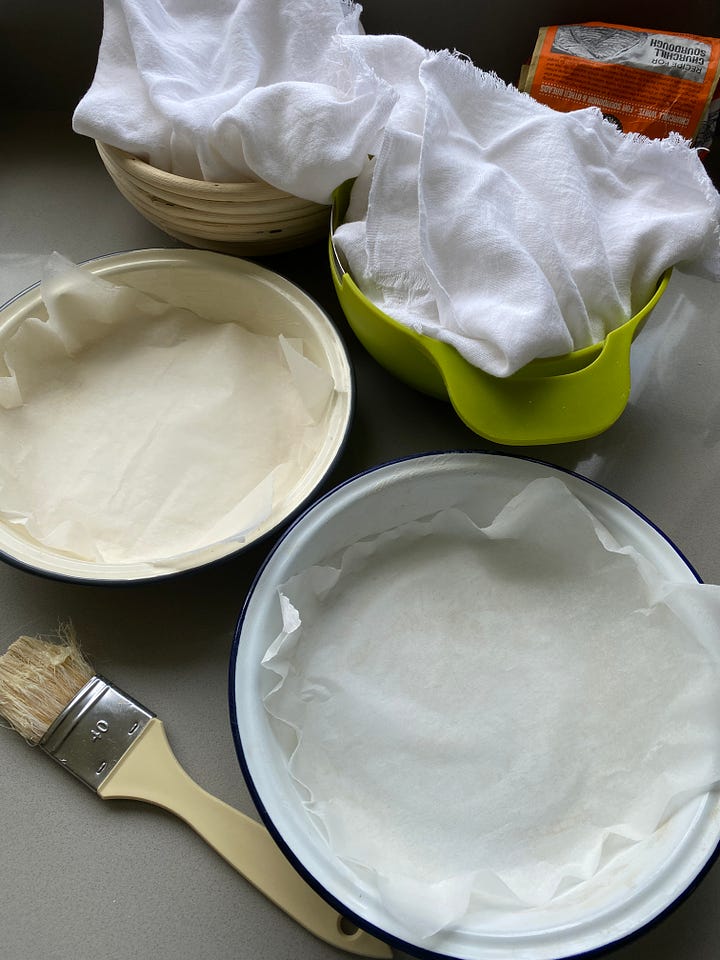
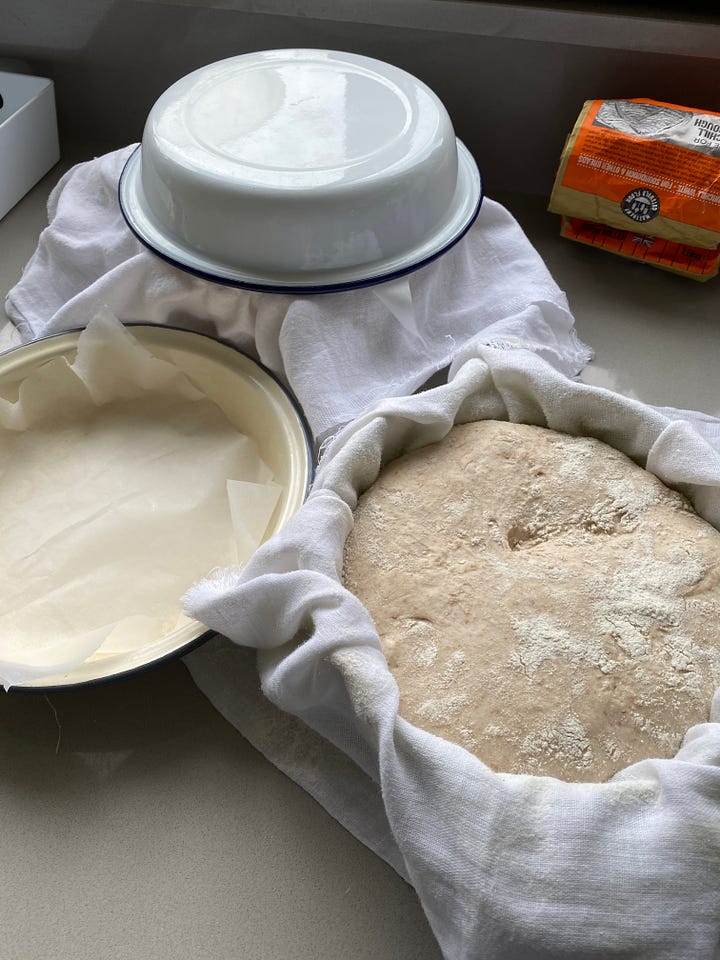
When the dough is ready to bake, I always bake loaves in pie tins greased and lined with baking parchment. This stops the dough from spreading and turning the loaves into frisbees.
Place the pie tin over the top of the bowl or Banneton with the risen dough, and carefully invert the dough into the tin.
When I first tried this method, I didn’t think I needed to line the tins. The result was the base of the loaf stuck at the bottom like super glue.
Lesson learned.
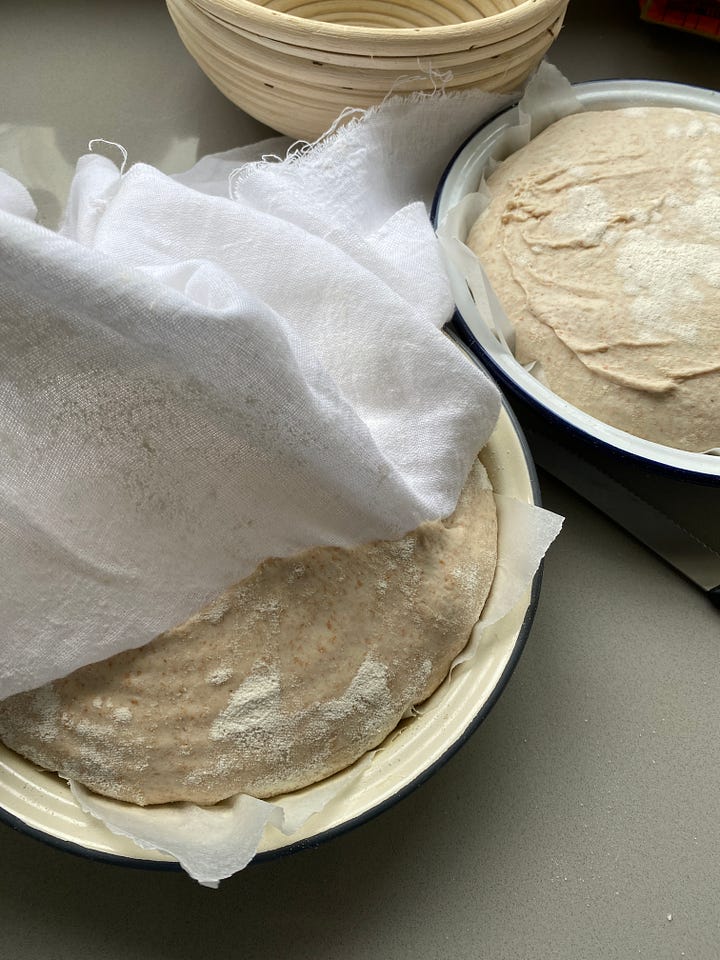
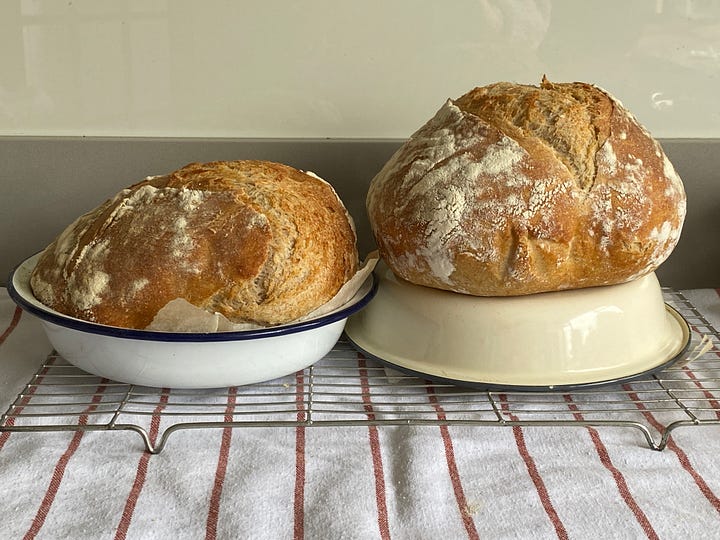
Carefully remove the muslin and score the top of the dough. I have yet to master the art of some decorative sourdough loaves, but a simple scoring across the top is fine for me. I find this also helps the dough rise a little more.
I bake my loaves on the middle shelf in a 200-degree fan oven for 35 - 40 minutes and always test the middle of the loaf with a thermometer to check that it’s done. If it reads around 94 degrees, they are done. I can also tap the bottom for hollowness.
I hope these little tips help.
If you make sourdough and have other tips, I would like to hear them. Please share them with our community as a comment below.
Don’t forget;
Join the Chat
Introduce yourself to the community
Check out the FoodStack Library and subscribe to some new writers and food bloggers.
Lynn x

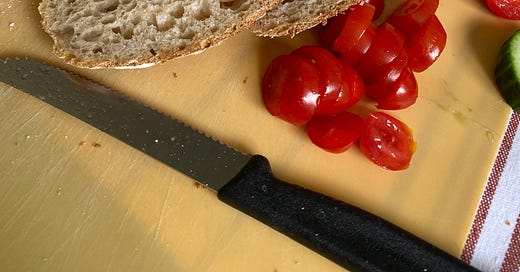



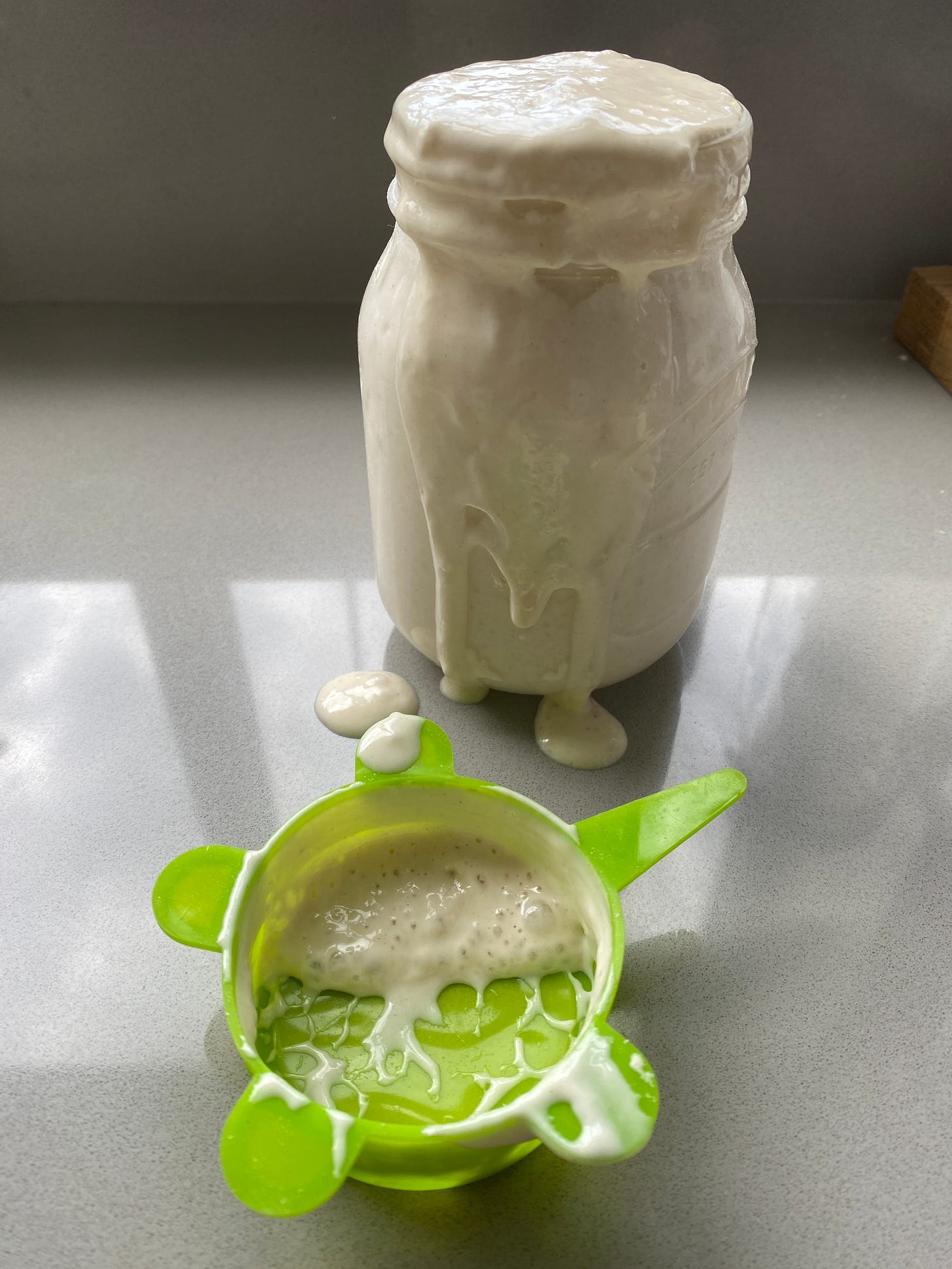
Oh Lynn, you’ve reminded me of when we made sourdough at the restaurants. There was a new lesson learned every day.
I need to revisit making sourdough again. Great post!